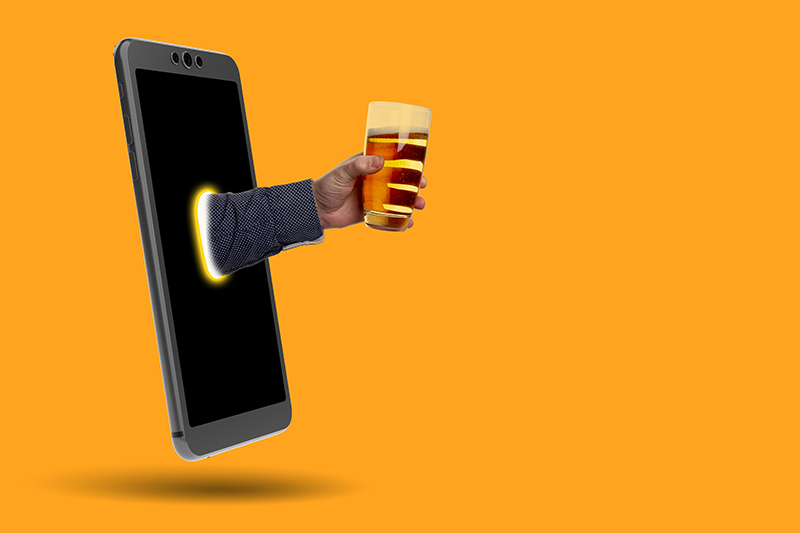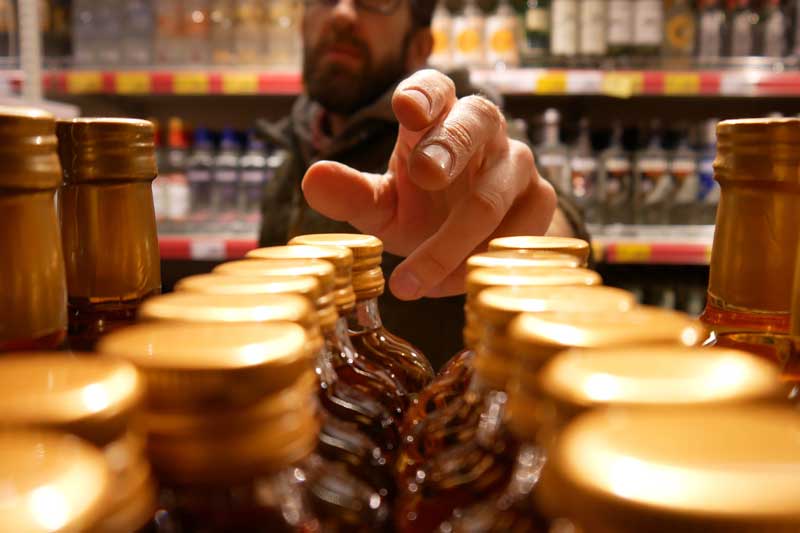Alcohol delivery apps are perhaps the fastest-growing area of the beverage alcohol industry right now. Even before the pandemic, sales for alcohol delivery services were on the rise. But once the stay-at-home orders were put in place, their numbers went through the roof. Months have passed since then and liquor stores are back open, but the delivery apps are still going strong. Perhaps customers who initially tried out the apps during the early days of the pandemic came to rely on their convenience, or perhaps people recognize that case numbers have not gone down and that non-essential trips out of the house are still a risk. Whatever the reasons, alcohol delivery apps appear to be here to stay.
But there’s one big problem with these services that hasn’t yet been solved: they aren’t available to everyone. Roughly half of the country, by area, is located in a ‘dead zone.’ Delivering within cities is easy enough, since the storage facilities and residences are all fairly close together. But in non-urban areas, having the infrastructure to deliver to every single home just isn’t practical. While the COVID-19 pandemic has been good for business in some ways, it also presents new challenges, especially in delivering to new areas. How long will it take for these services to be available nationwide, and is that goal even realistic?
How delivery services work
Getting drinks from Point A to Point B seems simple enough on paper, but the reality is significantly more complicated. First comes the question of where and what Point A is. For some services like Amazon or GoPuff, the products come from a centralized warehouse or storage facility. There are advantages and disadvantages to this model. It streamlines the process by eliminating the need for delivery drivers to stop at individual stores, which can cause logistical problems. Picking up their products directly from producers also eliminates the middleman, allowing them to keep prices low.
Other delivery services like InstaCart and Drizly (which currently leads the pack on alcohol delivery sales and coverage area) get the drinks that they sell directly from businesses in the area. Picking up products from multiple stores creates a lot of complexity, since the distributor needs to keep track of a myriad of different factors relating to each individual store in their network, such as their inventory and hours of operation. However, it also minimizes the distance between the aforementioned points A and B, resulting in delivery times that are often well under an hour. And as long as there are a few participating liquor stores within range of a user’s location, the selection of products available tends to vastly outnumber that of warehouse-based services, with thousands of items to choose from in many cases. It may also support local businesses in a time when they need it most, although the degree to which they help is a matter of debate, since the fees charged by most delivery companies mean that local stores make a lot less money than they would if the customer bought from them directly. But that’s a conversation for another blog post. The topic of this blog post concerns Point B: the locations that can be delivered to.
Where delivery services are available
While warehouse-based delivery services are limited to cities in which they have physical storage facilities, Drizly and other services that get their products directly from stores are free to set up shop just about anywhere that has retailers -and legislators- willing to cooperate with them. State laws regarding the delivery of alcohol directly to consumers vary wildly. Alabama (as well as Guam, Puerto Rico, and the U.S. Virgin Islands) doesn’t allow for the direct shipment of alcohol of any kind to consumers, while other states only allow it for wine and/or beer. Some have strict regulations in place that would make direct delivery too slow or costly to be practical. This is the main reason why Drizly is still unavailable in 24 states. However, the rules about alcohol delivery are beginning to loosen up in most places, partially in response to the pandemic and the growing profitability of these services. Each new state that allows delivery companies to operate within their borders creates the potential for millions of dollars in new revenue.
The drivers for most of these companies are not full-time employees, but members of the ‘gig economy’ who often use it as a second job to supplement their income. They typically work non-standard hours, earning a commission for each delivery based on the amount and distance, and (hopefully) a tip from the person ordering. This controls the amount the companies have to pay them so that they don’t have to worry about hiring too many drivers. The limiting factor is how many drivers they are able to recruit. Most of the companies guarantee delivery within a certain timeframe, and without a sufficient number of drivers in an area they can’t reliably make those deadlines.
And some areas just aren’t efficient to deliver to, even if there are drivers on-call. In plenty of small cities and towns across the country, some dwellings are miles away from the nearest participating liquor store. Drivers (and the delivery service) can actually lose money on deliveries that cost them too much time and gas money. This precludes many parts of the country, even if their local liquor stores are willing to do business.
Conclusion
As the pandemic drags on and the popularity and profit margins of alcohol delivery services continue to rise, the inexorable spread of their coverage areas can be expected to continue as well. Still, there are a number of different factors holding it at bay. While the companies might have the logistical capabilities to reach thousands of new cities, other factors will keep them out for the foreseeable future. But as long as they keep making money for participating retailers and offering them mutually beneficial rates, others will soon join the fold. So if your city isn’t on the constantly growing list of places where delivery services operate yet, don’t lose hope—but don’t hold your breath either.
- The CBMTA is Here to Stay! Here’s Why That’s Good for Craft Brewers - January 6, 2021
- High-End Liquor Sales are Recovering Slowly - November 10, 2020
- How to Reach New Customers in 2021 - November 5, 2020




